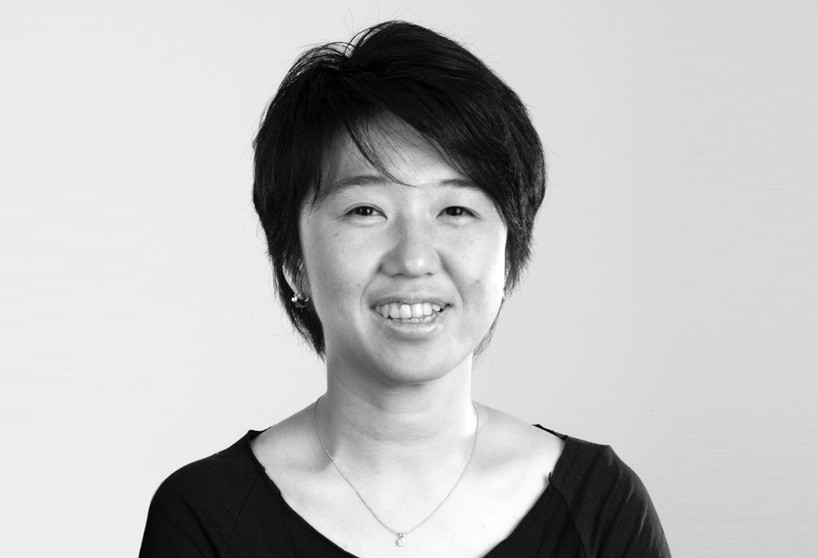
Interview with architect momoyo kaijima of atelier bow-wow
- Select a language for the TTS:
- UK English Female
- UK English Male
- US English Female
- US English Male
- Australian Female
- Australian Male
- Language selected: (auto detect) - EN
Play all audios:

INTERVIEW WITH ARCHITECT MOMOYO KAIJIMA OF ATELIER BOW-WOW ATELIER BOW-WOW IS A TOKYO-BASED ARCHITECTURE OFFICE, FOUNDED IN 1992 BY MOMOYO KAIJIMA AND YOSHIHARU TSUKAMOTO. over the past 23
years the firm has established itself not only as one of japan’s leading firms, but also as an internationally recognized practice. to understand more about the studio’s work, designboom
spoke with its co-founder momoyo kaijima. BORN IN 1969, KAIJIMA COMPLETED HER POST GRADUATE STUDIES AT THE TOKYO INSTITUTE OF TECHNOLOGY BEFORE BECOMING AN ASSISTANT PROFESSOR OF THE
UNIVERSITY OF TSUKUBA IN 2000. in 2003 she was a visiting faculty of harvard GSD, and has since been a guest professor at ETH zürich, the royal danish academy of fine arts and rice
university. in 2012, momoyo kaijima and her partner yoshiharu tsukamoto were awarded an international fellowship by RIBA, the royal institute of british architects. read our interview with
kaijima below. canal swimmer’s club, bruges, belgium image © haupt & binder DESIGNBOOM: WHAT ORIGINALLY MADE YOU WANT TO STUDY ARCHITECTURE AND BECOME AN ARCHITECT? MOMOYO KAIJIMA: since
I was a child, I was interested in houses and I wanted to be an architect. I wasn’t influenced by anything in particular, but when I was a child I had many opportunities to visit different
houses and I think this experience was very useful. beach house, chiba, japan image © atelier bow-wow see more of the project on designboom here DB: WHO HAS BEEN THE BIGGEST INFLUENCE ON
YOUR WORK TO DATE, AND WHAT THEMES ARE CURRENTLY FEEDING INTO YOUR DESIGNS? MK: my teacher, friends and everyone I know — although now my biggest influence is tsukamoto, (her partner at
atelier bow-wow). currently, I am interested in fishery, agriculture and forestry. I feel that professions that interact with nature are both modest and rich. model home made from paper,
with michael lin + andrew barrie image © auckland triennale see more of the project on designboom here DB: OVERALL, WHAT WOULD YOU SAY IS YOUR STRONGEST ASSET, AND HOW HAVE YOU DEVELOPED
THAT SKILL OVER TIME? MK: an important skill is working as part of a team with collaborative discussion. in addition, visiting many places and talking about them in order to cultivate a
better understanding is very interesting for architects and creative people. BMW guggenheim lab, new york, USA image © solomon r. guggenheim foundation, paul warcol see more of this project
on designboom here DB: YOUR ‘GRAPHIC ANATOMY’ BOOK EXPLORES ARCHITECTURAL DRAWING, HOW IMPORTANT IS THIS SKILL FOR ARCHITECTS? MK: the illustrations in the book are detail drawings, which
are made by our design process with added perspective. the drawings express the story of the design process. I really wanted to let architecture students know the fun of drawing. tower
machiya, tokyo, japan image © atelier bow-wow see more of this project on designboom here DB: WHAT IS THE BEST ADVICE YOU HAVE RECEIVED, AND WHAT IS YOUR PERSONAL MOTTO? MK: my friend gave
me the advice: ‘when you are worried about something, you are growing’. my personal motto is a japanese proverb that translates as ‘passion without knowledge is a runaway horse’. also, I
don’t want to be rich, but I like the straw millionaire story, (a japanese buddhist folk tale about a poor man who becomes wealthy through a series of successive trades, starting with a
single piece of straw). split machiya, tokyo, japan image © manuel oka see more of the project on designboom here izu book cafe, shizuoka, japan image © shinkenchiku sha see more of the
project on designboom here shotgun installation at the rice gallery, houston, USA image © nash baker see more of the project on designboom here philip stevens I designboom oct 14, 2015
